Laut DG-Aviation hat die erste LS10 mit nachgerüstetem FES-System das Werk verlassen. Alle bei DG Flugzeugbau hergestellten LS10-s und LS10-st können mit dem FES-System ab sofort um- bzw. nachgerüstet werden.
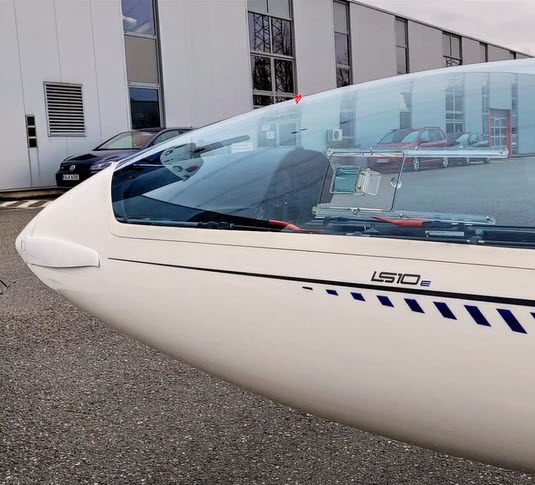



Laut DG-Aviation hat die erste LS10 mit nachgerüstetem FES-System das Werk verlassen. Alle bei DG Flugzeugbau hergestellten LS10-s und LS10-st können mit dem FES-System ab sofort um- bzw. nachgerüstet werden.
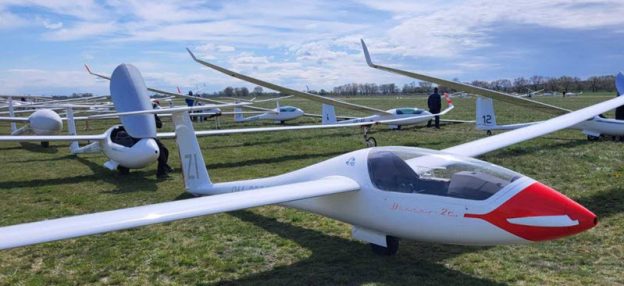
FES-equipped gliders are relatively new and unfamiliar to other airfield users who may not appreciate the dangers of the flush seated, self-deploying, fast turning and solid propeller blades on the nose of the glider. In addition to any precautions described in the aircraft flight manual, these points can be helpful:
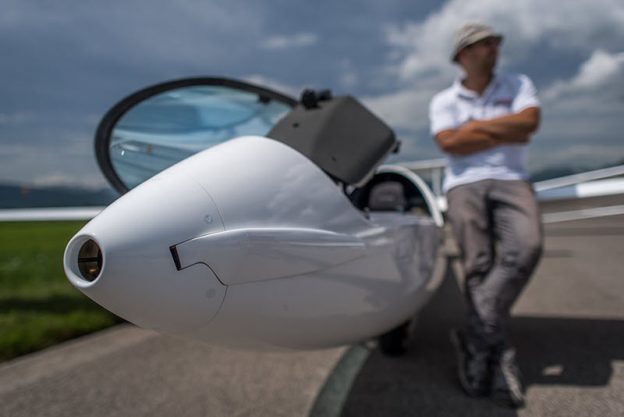
FES-equipped gliders are relatively new and unfamiliar to other airfield users who may not appreciate the dangers of the flush seated, self-deploying, fast turning and solid propeller blades on the nose of the glider. In addition to any precautions described in the aircraft flight manual, these points can be helpful:
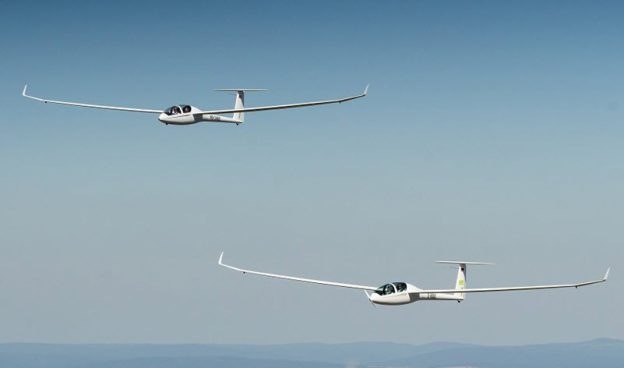
DG-Flugzeugbau aus Bruchsal erhält einer Meldung auf seiner Webseite vom 16. Februar 2023 zufolge die EASA Musterzulassung für die DG-1001E. DG produziert damit den ersten Elektro-FES-Doppelsitzer.
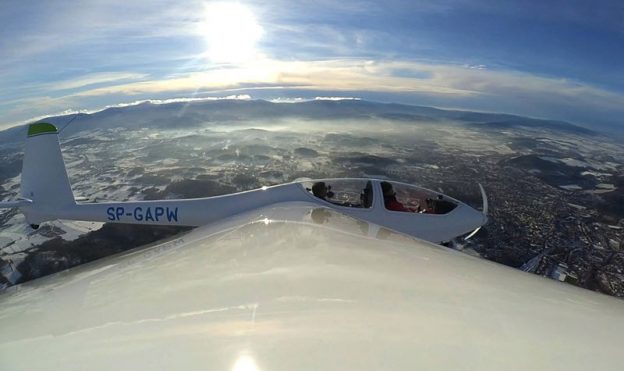
A team from the Faculty of Power and Aeronautical Engineering has developed PW-X10 – an experimental, flying electric powered 2-seat platform. The machine is brought into service by the WUT Aviation Research Centre „OBLOT“, located at the airport in Sieraków, near Przasnysz. The design is just another result of works related to electromobility in aviation carried out at WUT. The motor glider has been developed for the purpose of researching new low-emission aviation power units. – We want to use the PW-X10 platform for testing complete electric power units and their components, such as engines, propellers, control systems, power supply systems obtained from electrochemical cells, fuel cells, photovoltaic cells or energy flow management systems – says Wojciech Frączek from the Institute of Aeronautics and Applied Mechanics at the Faculty of Power and Aeronautical Engineering, the designer conducting the design works. The new motor glider is also to serve other research, planned in the „ODLOT“ centre in Przasnysz. It concerns, among others, the study of composite structures in conditions of natural exploitation or the spectrum of loads on the airframe structure in terms of service life tests.
PW-X10 structure
The PW-X10 platform is made of hybrid polymer composites. The creators diversified the structure of the materials, taking into account the weight, strength, rigidity or durability of the structure, as well as the safety of the crew inside. In the front part of the fuselage with the cockpit, a composite reinforced with glass fibres was used, which provides, among others, better protection for the crew, in the remaining part, where high rigidity is desirable, carbon fibres dominate. The motor glider is equipped with an FES (Front Electric Sustainer), which is launched during flight, and placed in the hull bow. It provides a climb of 1.7 m/s with the maximum weight of the platform, while during the flight of only one person it reaches 2.5 m/s. – These are very good values, especially since the use of such a propulsion system in a two-seat glider is a novelty – emphasizes Wojciech Frączek.
The batteries supplying the drive unit were made using lithium-polymer technology. The creators of PW-X10 chose the best batteries available on the market that meet the requirements for this design. The system has a built-in BMS surveillance system and is located in a special chamber isolated from the cockpit, placed at the rear of the fuselage. All of this to ensure an adequate level of safety. Various types of test equipment will be installed on the PW-X10. Therefore, the hull in the central part has been supplemented with external attachment points for additional equipment. – In the future, as part of the reconfiguration of the platform, we expect to install, among others, an external power generator with a capacity of approx. 30 kW, which will be used to test the hybrid power supply system – explains Wojciech Frączek.
Many years of experience
The design of the new glider is the work of the team of Prof. Piotr Czarnocki from the Faculty of Power and Aeronautical Engineering. The work was divided into two stages: design and testing of new wings (2018-2019) and design and testing of a new hull, tail units and control systems (2020-2021). It would not have been possible to create such a structure without many years of experience and fruitful cooperation with specialists from outside the Faculty of Power and Aeronautical Engineering and the „OBLOT“ centre.
PW-X10 is another fruit of the ULS Program implemented for over 40 years at the Faculty of Power and Aeronautical Engineering, consisting of the construction and research of innovative aircraft. At that time, one-seater ULS-PW and PW-2 Gapa gliders were created, two-seater PW-3 Bakcyl and PW-6 gliders, two-seater PW-4 motor glider or one-seater PW-5 Smyk – the winner of the world competition for the Olympic glider monotype. The last designs before PW-X10 are a two-seat motor glider with electric drive AOS-71 (the effect of the work of the team of Prof. Krzysztof Arczewski) and an experimental motor glider with AOS-H2 hybrid hydrogen propulsion (developed by the team of Prof. Piotr Czarnocki in consortium cooperation with, among others, the team of Prof. Grzegorz Iwański from the Faculty of Electrical Engineering at WUT). PW-X10 was built by the „Jeżów“ Glider Plant in Jeżów Sudecki, with which the Faculty of Power and Aeronautical Engineering has already successfully cooperated in the work on previous structures.
Full readiness
The motor glider is beyond the test stage. The flight and test flights took place at the airport in Jelenia Góra. Jerzy Kędzierski – a graduate of the Faculty of Power and Aeronautical Engineering, an experimental pilot of the first class, sat at the helm of the machine. – The platform launches took place in the lobby behind the „immortal“ Jak-12 aircraft – says Wojciech Frączek. – After towing to a height of approx. 2500 m and after disconnection, the pilot carried out a flight program that included checking the behaviour of the platform in sliding flights and with the power unit switched on. The tests were a success. Now PW-X10 is waiting in the hangar of the “OBLOT“ centre in Przasnysz. As soon as the weather permits, it will perform experimental flights. Source: ‚Warsaw University of Technology‚.
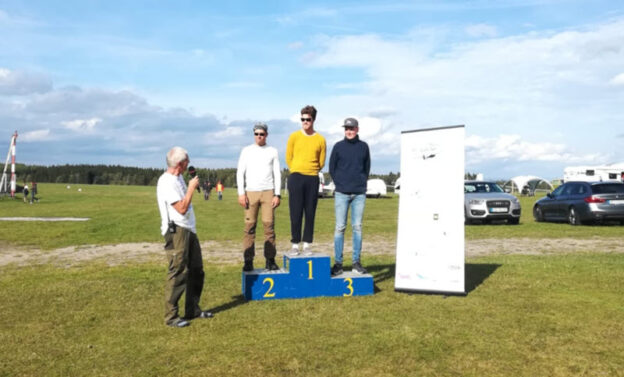
Es war eine tolle Erfahrung, die e2glide auszurichten. Wir sind an den Herausforderungen gewachsen und waren nach dem einhelligen feedback der Teilnehmer gute Gastgeber. Es hat sich gezeigt, dass mit den Elektroantrieben eine enorme Chance besteht, die segelfliegerisch nutzbare Saison zu erweitern und dabei immer sicher unterwegs zu sein. In den nächsten Tagen werden wir noch weitere Daten präsentieren, die diese Aussagen unterstreichen können. (…) das Briefing ist vorbei. Der Sportleiter hat als einziges fliegbares Fenster die Möglichkeit gefunden, in Richtung Tschechien nach Osten zu fliegen und die Ziellinie nach LKCH (Chomutov) zu verlegen…. Diese Aufgabenstellung hat beim Briefing durchaus für verlegene Stille gesorgt, ehe wir dann doch den Tag für heute neutralisieren mußten. Die erste Regenfront ist einfach zu schnell am Platz und zerschneidet den Tag leider in zwei nicht einmal für FES-Flugzeuge fliegbare Hälften. Lesen Sie die anderen Tagesbericht hier auf der Webseite des Wettbewerbs-Ausrichters ‚e2glide.de‚.
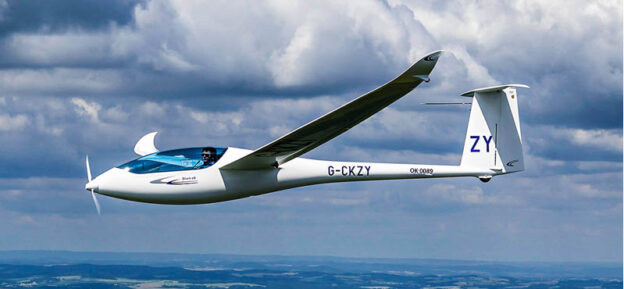
Der Fliegerclub Großrückerswalde e.V. veranstaltet vom 28. August bis 5. September 2020 die zweite Auflage des EGLIDE-Wettbewerbs im Grand Prix Format. Nach einem ersten erfolgreichen Wettbewerb in den Bergen des nördlichen Apennins folgt nun die zweite Auflage des Events über dem Weltkulturerbe Erzgebirge. Das Format E2GLIDE hat zum Ziel, die gesammelte Erfahrung vom 1. eglidecontest 2019 in Pavullo/Italien strukturiert aufzugreifen und mit weiteren Ideen zu kombinieren. Der Einsatz von definierten Motorkontingenten während des Wertungsfluges ermöglicht zunehmende Unabhängigkeit von Wettererscheinungen und öffentlichkeitswirksame Renn-Events.
Anfang September werden sich bis zu 20 Teilnehmer in spannenden Luftrennen vom Flugplatz Grossrückerswalde aus um die effizienteste Flugwegwahl duellieren, darunter einige VIPs der Segelflugszene. Im Gegensatz zu gewöhnlichen Segelflugwettbewerben darf nach dem Regatta-Abflug ein definiertes Energiekontingent genutzt werden, um mithilfe eines Elektromotors Außenlandungen zu vermeiden oder die Durchschnittgeschwindigkeit zu erhöhen. Wer zuerst das Zielband überfliegt, gewinnt den Tag. Überschrittenes Energiekontingent wird mit einer Zeitstrafe belegt. Unter www.e2glide.de finden Sie alle wichtigen Informationen über die Veranstaltung.
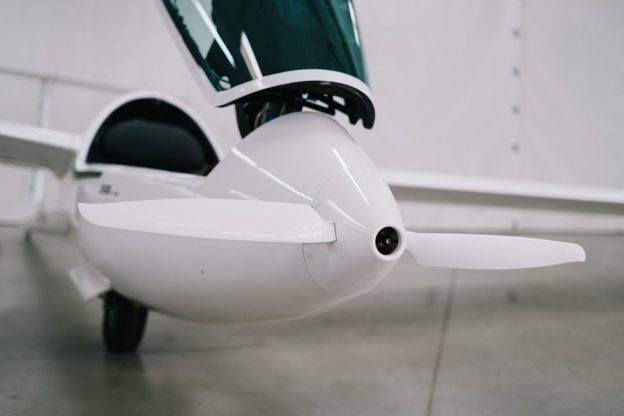
Von Donnerstag, 3. bis Sonntag. 6. Oktober 2019 wird Holger Back, Geschäftsführer von DG Flugzeugbau in Bruchsal, mit der LS8e die Schweiz besuchen. U.a. sind auch Testflüge ab dem Flugplatz Schänis südlich von Zürich geplant. Aktuell steht der (wetterabhängige) ‚Tourneeplan‘ noch nicht bis ins Detail, wir informieren Sie aber frühzeitig über die Flugdaten und -Orte, wenn Sie sich per eMail als InteressentIn für die Schweizer Testflüge anmelden. Anmeldungen bitte per eMail an ‚cinque [a] flieger.news‘.
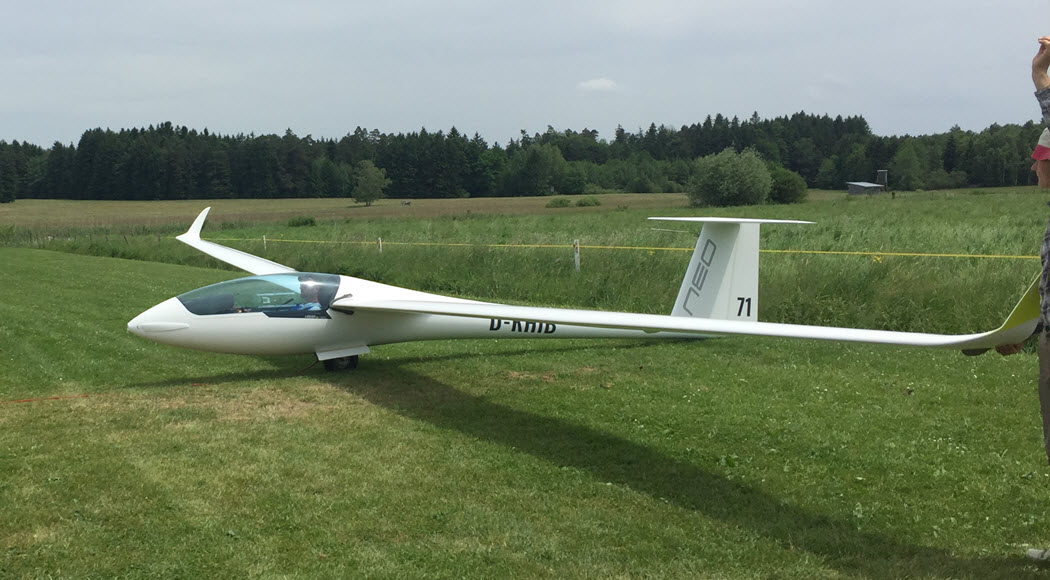
Weitere Informationen zum Flugzeug.
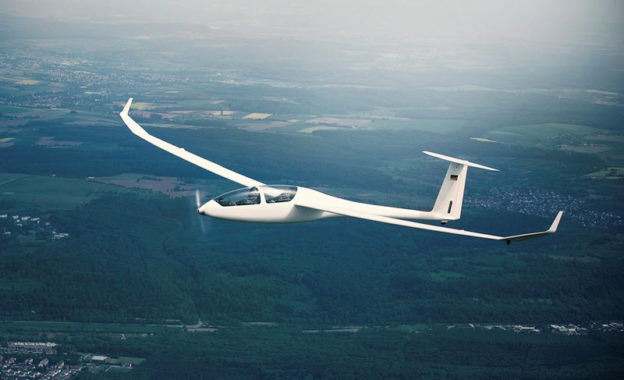
Das FES System etabliert sich im Sektor der einsitzigen Segelflugzeuge. Immer mehr Vereine und Privatpiloten schätzen die Vorzüge des einfachen Triebwerks. Ein Antrieb für jedermann, der auf Knopfdruck den Piloten wieder in sicherere Höhen befördert und in Sachen Bedienkomfort kaum zu schlagen ist. DG Flugzeugbau hat sich daher entschlossen, dieses Konzept auch für die DG-1001 anzubieten. Der bereits bekannte FES Antrieb von LZ Design wird modifiziert und liefert für den Einsatz in der DG-1001 ca. 30kw. In Kombination mit einer neuen Akku Generation erwarten wir so dieselbe Performance wie bei der LS8-e neo. Der Bau des ersten Prototypen beginnt im Spätsommer. Der Erstflug ist für Frühjahr 2020 geplant. Quelle: ‚DG-Flugzeugbau‚.
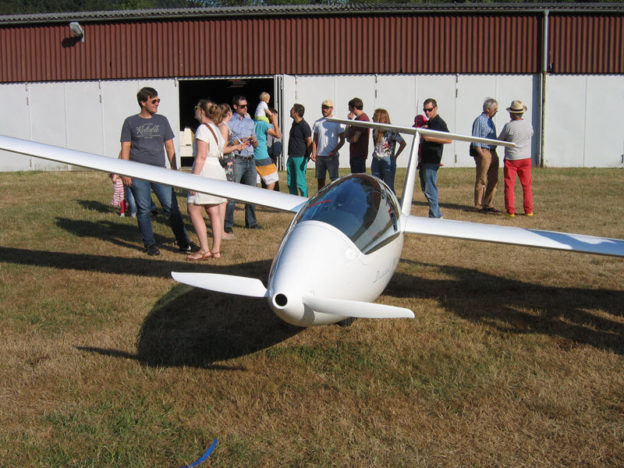
Der Breisgauverein für Segelflug, der sowohl am Flugplatz Freiburg als auch am Segelflugplatz Kirchzarten beheimatet ist, hat einen neuen, besonders umweltfreundlichen Motorsegler vom Typ Discus 2C Fes des schwäbischen Herstellers Schempp-Hirth angeschafft. Das einsitzige Segelflugzeug mit 18 Meter Spannweite hat einen faltbaren Propeller vorne im Rumpf, der durch einen 22 kw oder 30 PS starken Elektromotor angetrieben wird. Die Neuerwerbung ist besonders leise und passt damit bestens über die Green City Freiburg und das Dreisamtal. Zudem benötigen die Akkus des Discus nach etwa einer Stunde Motorflug lediglich etwa eineinhalb Stunden zum Wiederaufladen. Die Stromspeicher bringen den Motorsegler, wenn sie durch regenerative Energien aufgeladen werden, umweltfreundlich und leise wieder auf Höhe, falls nicht genügend thermischer Aufwind zur Verfügung steht. Dann wird das Triebwerk kurz eingeschaltet, der Faltpropeller vorne im Rumpf sorgt nun für Vortrieb. Wird der Elektromotor wieder abgestellt, legen sich die Propellerblätter eng an die Rumpfspitze an, um möglichst wenig Luftwiderstand zu bieten. Starten nur mit dem Elektromotor kann der Discus allerdings nicht. Deshalb wird er per Windenschlepp in die Luft gezogen. Der neu angeschaffte Einsitzer ist kostengünstig im Betrieb. Er dient nicht zur Schulung, sondern als Hochleistungsmodell für bereits erfahrene Piloten und Pilotinnen. Der Breisgauverein für Segelflug mit rund 170 Mitgliedern geht auf den bereits 1907 in Freiburg gegründeten “Verein für Luftschiffahrt” zurück und ist somit einer der ältesten Fliegervereine Deutschlands. Er hat neben weiteren reinen Segelflugzeugen und dem neuen Elektroflieger auch noch einen konventionellen Motorsegler mit Verbrennungsmotor in seiner Flotte. Durch eine engagierte Zusammenarbeit mit mehreren Freiburger Gymnasien, der Universität und der Volkshochschule Kirchzarten gewinnt der Verein auch zunehmend frischen Nachwuchs für den Segelflug. Bericht: Jürgen Schelling.
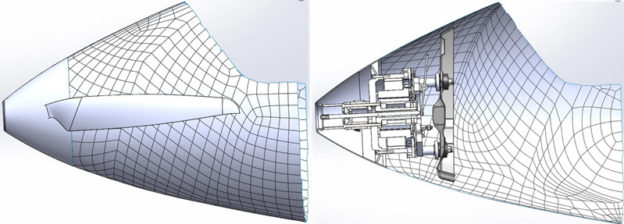
DG Flugzeugbau bringt das FES (Front-Electric-Sustainer)-Antriebssystem an der AERO für die LS8. Die LS8-e wird es auch in einer 18m–Version mit LS Winglets geben. Dank einfacher Bedienung lässt sich der Motor laut Werksangabe ohne Zeitverzug starten und volle Leistung ist sofort abzurufbar. Ein vibrationsfreier Antrieb kombiniert gute Leistung mit leisem Lauf. DG Flugzeugbau zeigt den Prototyp der LS8-e auf der Aero 2019. Die Messe findet vom 10. bis 13. April auf dem Messegelände in Friedrichshafen statt.